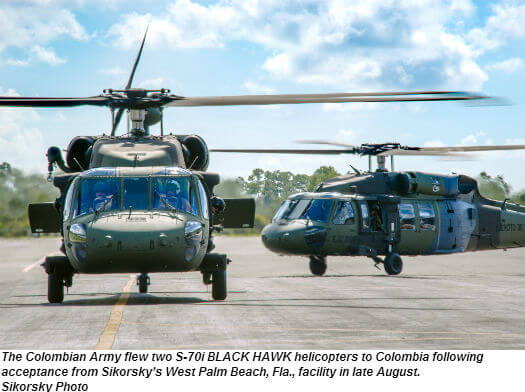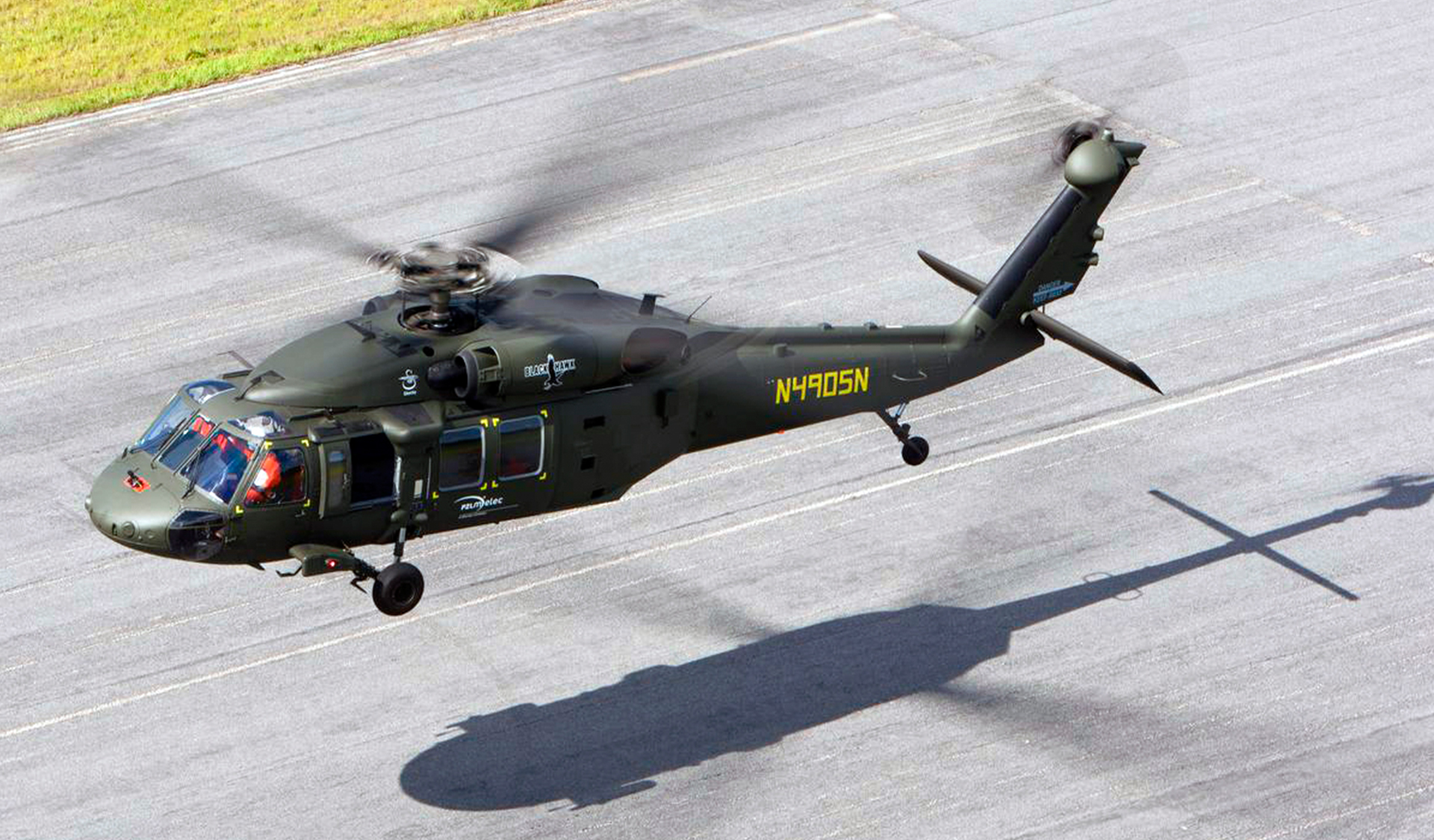Exploring the Capacities of the Sikorsky S 70: A Comprehensive Review
Wiki Article
High-Performance Multi-Role Rotorcraft Featuring Advanced Cockpit Technologies and Integrated Sensing Unit Systems
The realm of rotorcraft modern technology has seen notable innovations in recent times, particularly in the world of high-performance multi-role rotorcraft furnished with cutting-edge cockpit modern technologies and seamlessly incorporated sensing unit systems. These advancements have not just enhanced the operational capacities of rotorcraft yet have actually likewise substantially influenced modern-day aeronautics procedures on numerous fronts. From enhanced goal flexibility to enhanced functional performance, the convergence of innovative cockpit innovations and incorporated sensor systems has actually introduced a new age of opportunities for rotorcraft applications. In the adhering to conversation, we will certainly check out the development of rotorcraft technology, explore the world of advanced cabin technologies, and take a look at the implications of integrated sensing unit systems on the operational flexibility and efficiency of modern-day rotorcraft.Evolution of Rotorcraft Innovation
The advancement of rotorcraft technology has been noted by substantial advancements in aerodynamics, products, and propulsion systems, forming the capabilities and efficiency of modern-day rotorcraft. Wind resistant improvements have actually enhanced the effectiveness and maneuverability of rotorcraft, enabling raised rate, dexterity, and stability throughout trip (sikorsky s 70). Developments in materials, such as the use of composite products and advanced alloys, have caused lighter yet more powerful rotorcraft frameworks, boosting overall performance and longevity. Furthermore, innovations in propulsion systems, including a lot more effective engines and ingenious propulsion technologies, have actually enabled rotorcraft to achieve greater elevations, faster rates, and better hauls.These advancements have not only transformed the capabilities of rotorcraft however have actually likewise expanded their applications throughout different markets, including armed forces, commercial, and emergency situation solutions. The constant development of rotorcraft innovation continues to drive advancement in the field, pushing the boundaries of what is possible and shaping the future of vertical trip.
Advanced Cabin Innovations
Building upon the foundational innovations in aerodynamics, materials, and propulsion systems, the realm of rotorcraft technology currently moves emphasis towards pioneering Advanced Cockpit Innovations. The integration of sophisticated innovations within the cockpit atmosphere plays an important duty in improving the functional abilities, safety and security, and effectiveness of modern-day rotorcraft. sikorsky s 70. Advanced Cockpit Innovations incorporate a broad selection of functions made to offer pilots with boosted situational understanding, streamlined data monitoring, and user-friendly control interfacesAmong the key developments in cabin style is the implementation of glass cockpits, which replace standard analog assesses with high-resolution displays. These digital systems use personalized layouts, real-time information combination, and enhanced readability, allowing pilots to gain access to essential information at a glance. Progressed avionics systems, such as fly-by-wire controls and boosted truth display screens, are reinventing how pilots communicate with the airplane, allowing for precise control and improved decision-making abilities.


Incorporating innovative cabin advancements not only enhances pilot efficiency however likewise contributes to overall goal performance and security in complex functional settings. By leveraging advanced innovations within the cockpit, rotorcraft manufacturers are setting brand-new criteria for functional excellence and mission success.
Integrated Sensing Unit Solutions
With the evolution of rotorcraft innovation, the integration of innovative Integrated Sensor Systems has actually become extremely important in boosting operational performance and security. These Integrated Sensor Equipments include a wide selection of modern technologies that offer vital data for various features such as navigation, surveillance, targeting, and environmental tracking. By effortlessly integrating sensors like radars, cams, lidar, and infrared systems right into rotorcraft, operators can benefit from boosted situational recognition, improved objective capabilities, and decreased pilot workload.One secret advantage of Integrated Sensing unit Solutions is their capacity to collect real-time data and offer workable understandings to pilots and goal operators. Advanced radar systems can find and track targets over long ranges, enabling for very early threat detection and efficient feedback preparation. Furthermore, incorporating infrared and electro-optical cams enables rotorcraft to perform reconnaissance and surveillance objectives with accuracy and precision.
Basically, the integration of sophisticated sensor innovations right into rotorcraft not only improves functional effectiveness however additionally contributes significantly to general objective success and team safety. As rotorcraft continue to evolve, the function of Integrated Sensing unit Systems will definitely stay at the forefront wikipedia reference of development in the aerospace industry.
Functional Flexibility and Effectiveness
Enhancing operational convenience and effectiveness in rotorcraft is an all-natural development from the assimilation of innovative Integrated Sensor Equipments. By leveraging the data and insights offered by these advanced sensing unit systems, rotorcraft can enhance their performance throughout different objectives and atmospheres.Operational versatility incorporates the capability of rotorcraft to adapt to various roles and circumstances effectively. With advanced cabin innovations and integrated sensing unit systems, rotorcraft can perfectly change between tasks such as search and rescue, clinical emptying, surveillance, and much more. This versatility boosts the rotorcraft's ability to satisfy diverse operational requirements without needing comprehensive reconfiguration.
Effectiveness in rotorcraft operations is critical for taking full advantage of mission efficiency and resource use. Integrated sensing unit systems play a pivotal role in enhancing functional effectiveness by supplying real-time information on weather conditions, terrain mapping, target monitoring, and more. This data makes it possible for pilots to make informed decisions promptly, maximize flight paths, save gas, and enhance general goal performance.
Influence On Modern Aviation Workflow

Furthermore, the assimilation of sophisticated sensing units assists in enhanced objective preparation and implementation, enabling rotorcraft to perform a vast array of jobs with boosted accuracy. his response From search and rescue procedures to airborne firefighting and legislation enforcement missions, the capacities of modern rotorcraft geared up with advanced cabin technologies and integrated sensing unit systems are unequaled.
Furthermore, the effect of these advancements prolongs past functional performance to cost-effectiveness and sustainability. By enhancing trip routes, fuel usage, and upkeep schedules, high-performance rotorcraft geared up with innovative cabin technologies and sensors add to lowering operational expenses and environmental influence, making them important properties in contemporary aeronautics operations.
Conclusion
To conclude, the high-performance multi-role rotorcraft with innovative cockpit modern technologies and integrated sensor systems stands for a significant advancement in aviation modern technology. These developments boost functional flexibility and effectiveness, ultimately affecting modern air travel procedures in a favorable method. The integration of these sophisticated innovations permits enhanced abilities and efficiency in different mission scenarios, showcasing the proceeded advancement of rotorcraft technology in the air travel market.The world of rotorcraft modern technology has actually seen significant innovations in current times, especially in the realm of high-performance multi-role rotorcraft equipped with cutting-edge cabin modern technologies and effortlessly integrated sensor systems. From boosted goal adaptability to enhanced operational performance, the merging of sophisticated cockpit technologies and incorporated sensing unit systems has actually ushered in a brand-new era of possibilities for rotorcraft applications. In the complying with discussion, we will certainly check out the development of rotorcraft technology, dive into the world of sophisticated cockpit technologies, and take a look at the implications of integrated sensing unit systems on the operational convenience and effectiveness of modern rotorcraft.

Report this wiki page